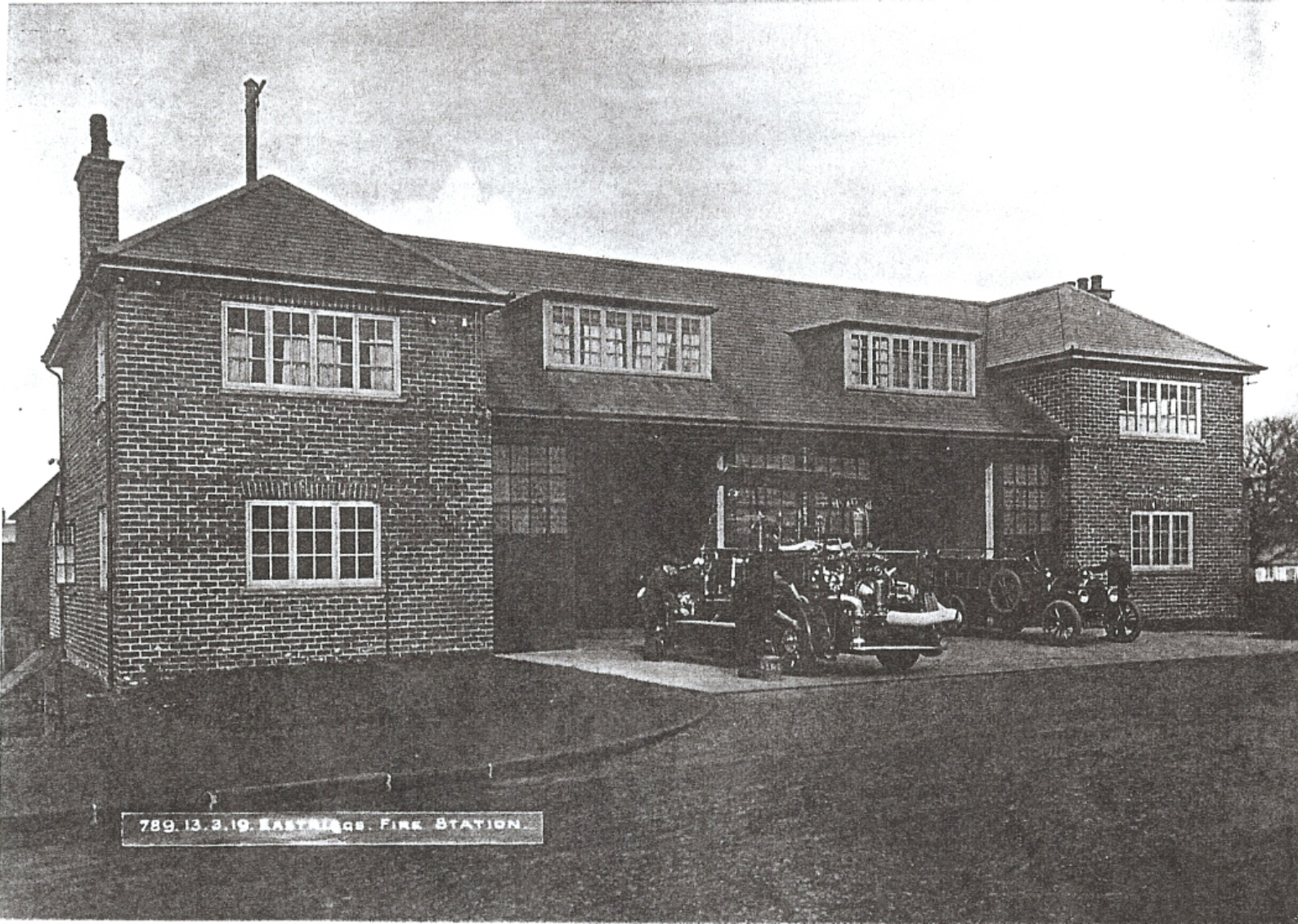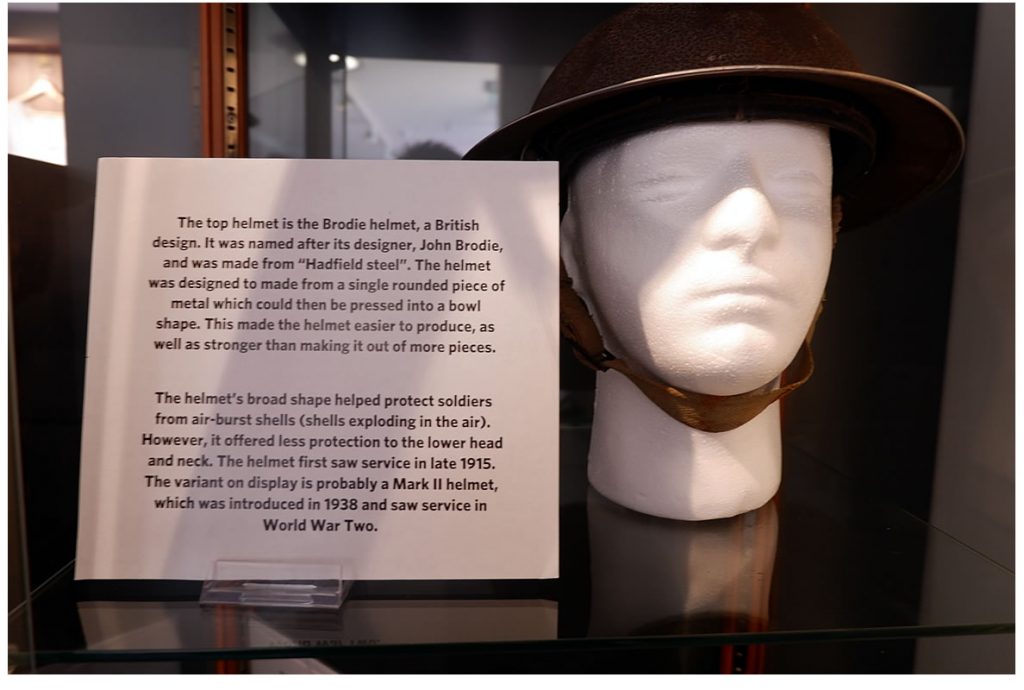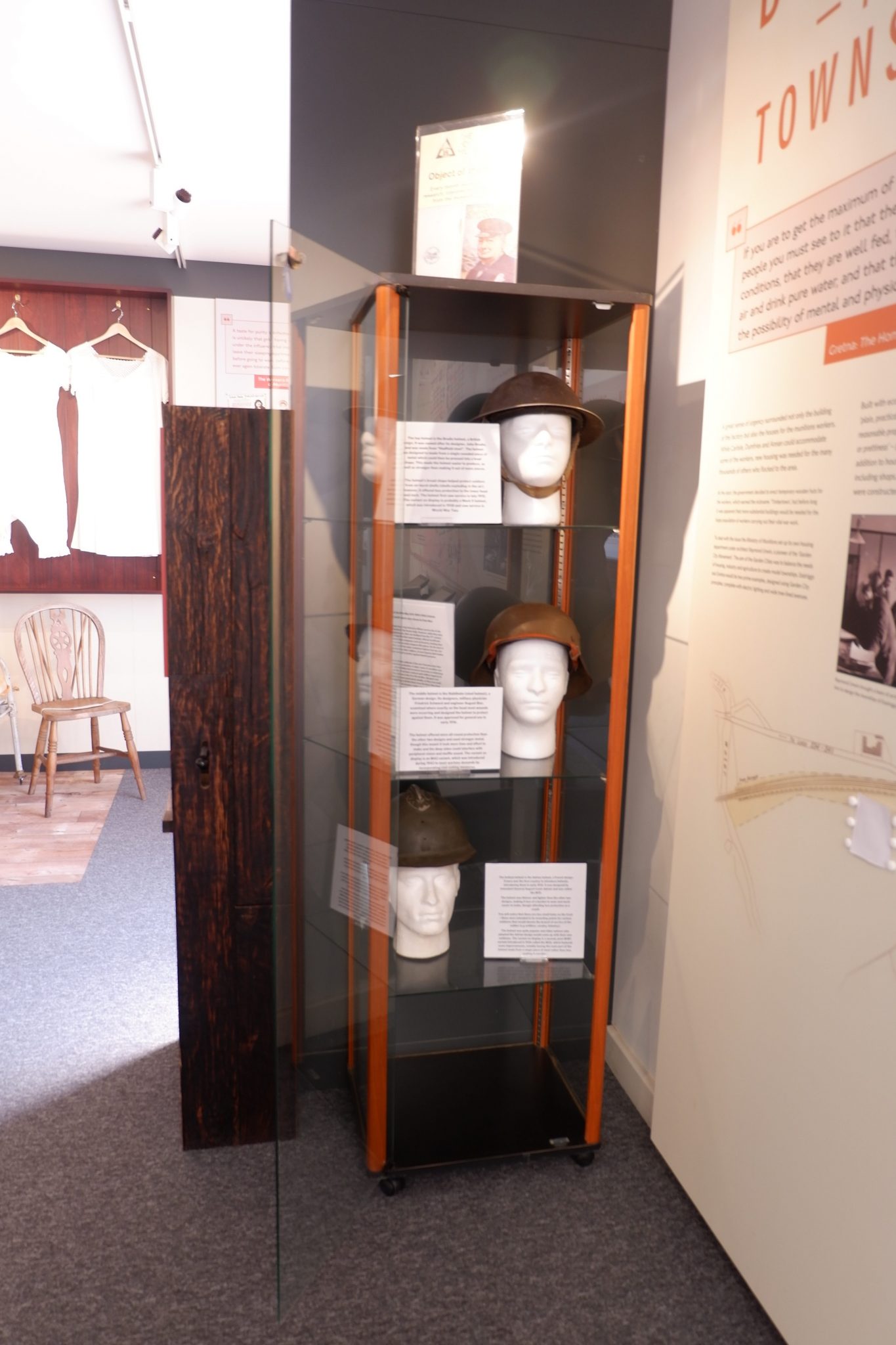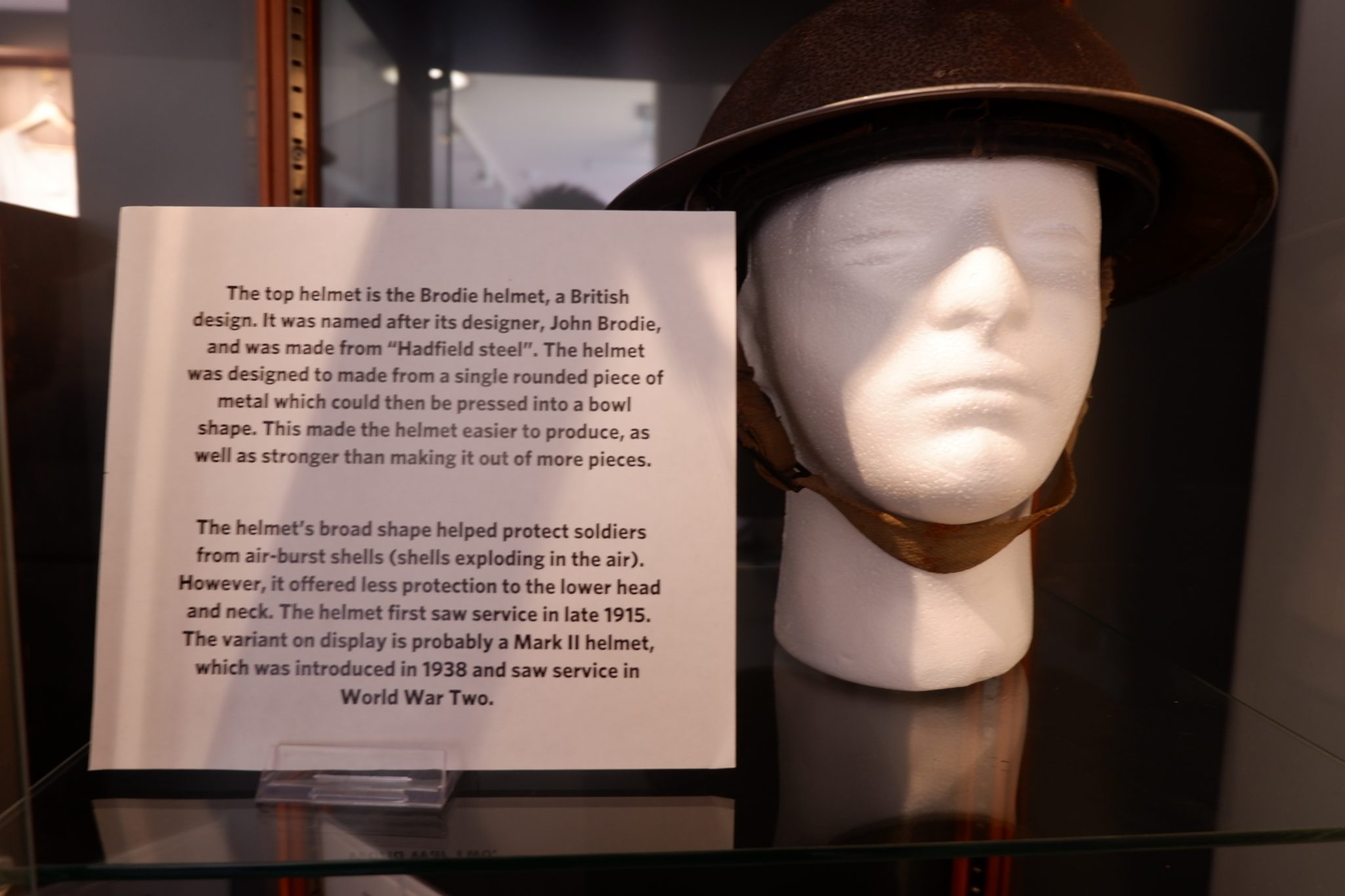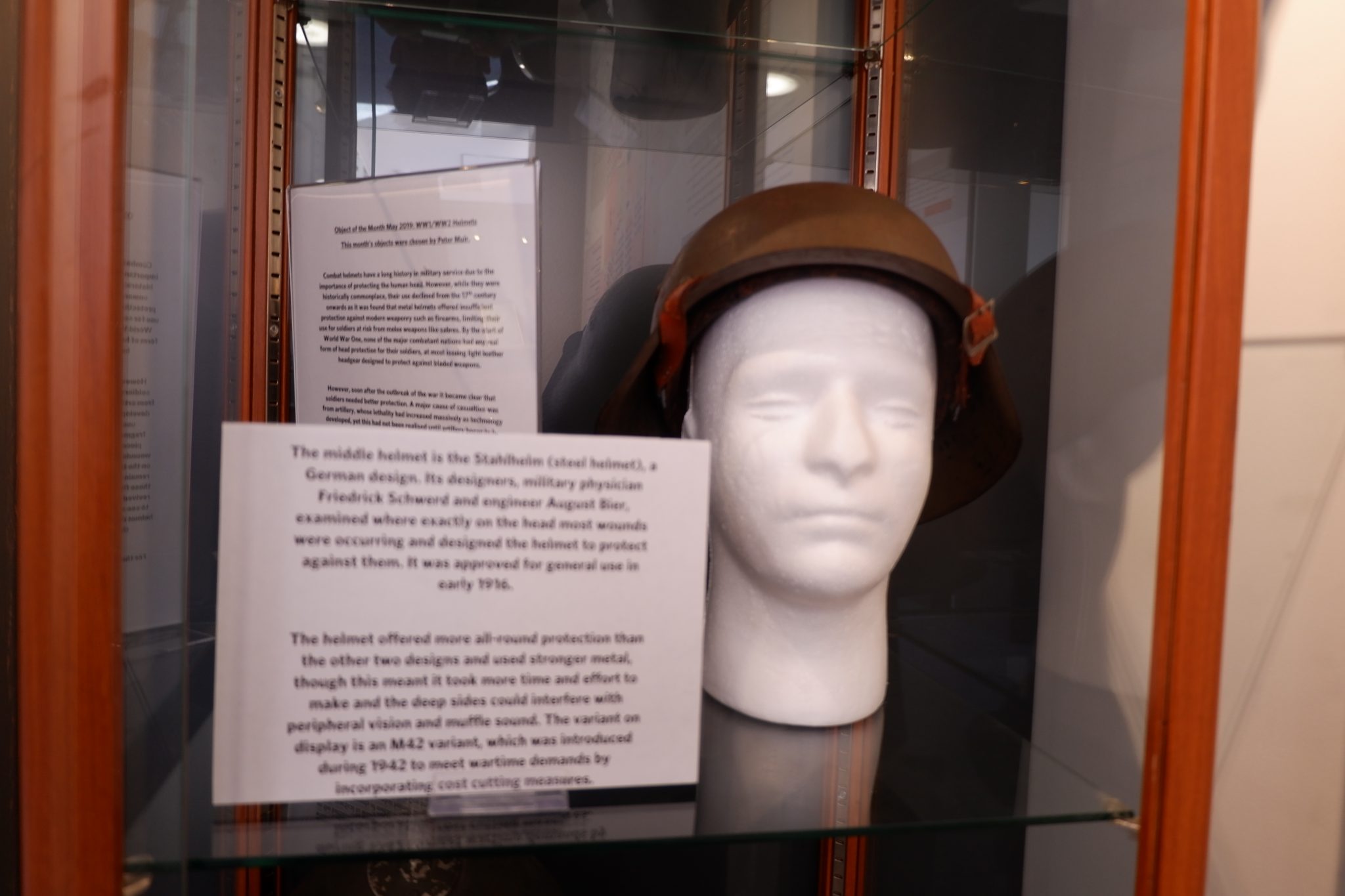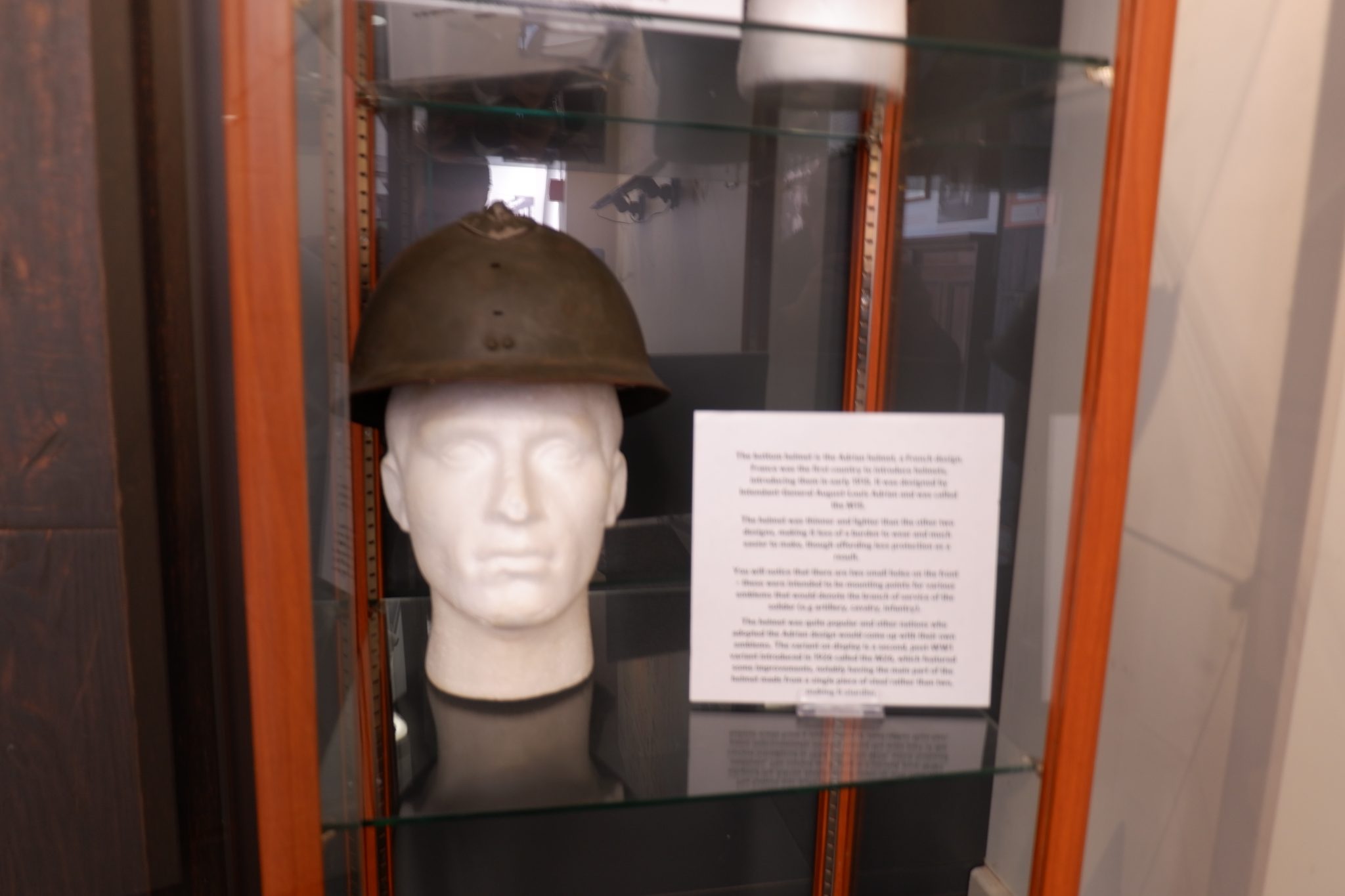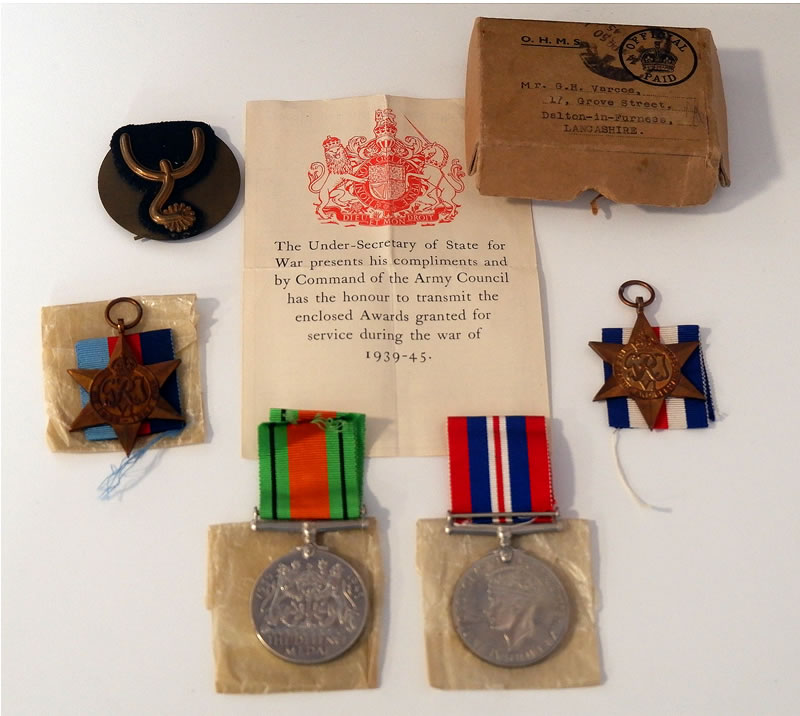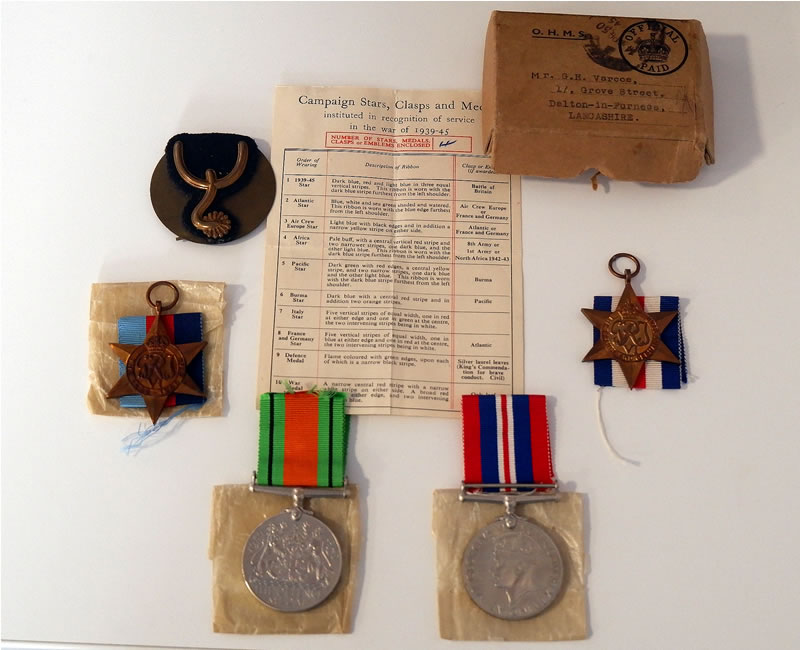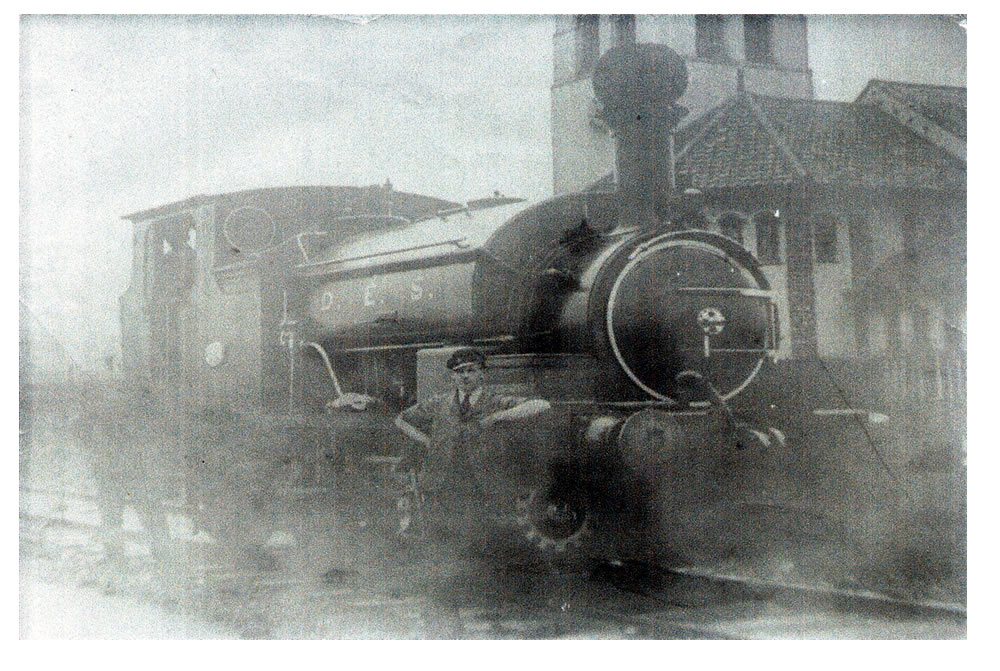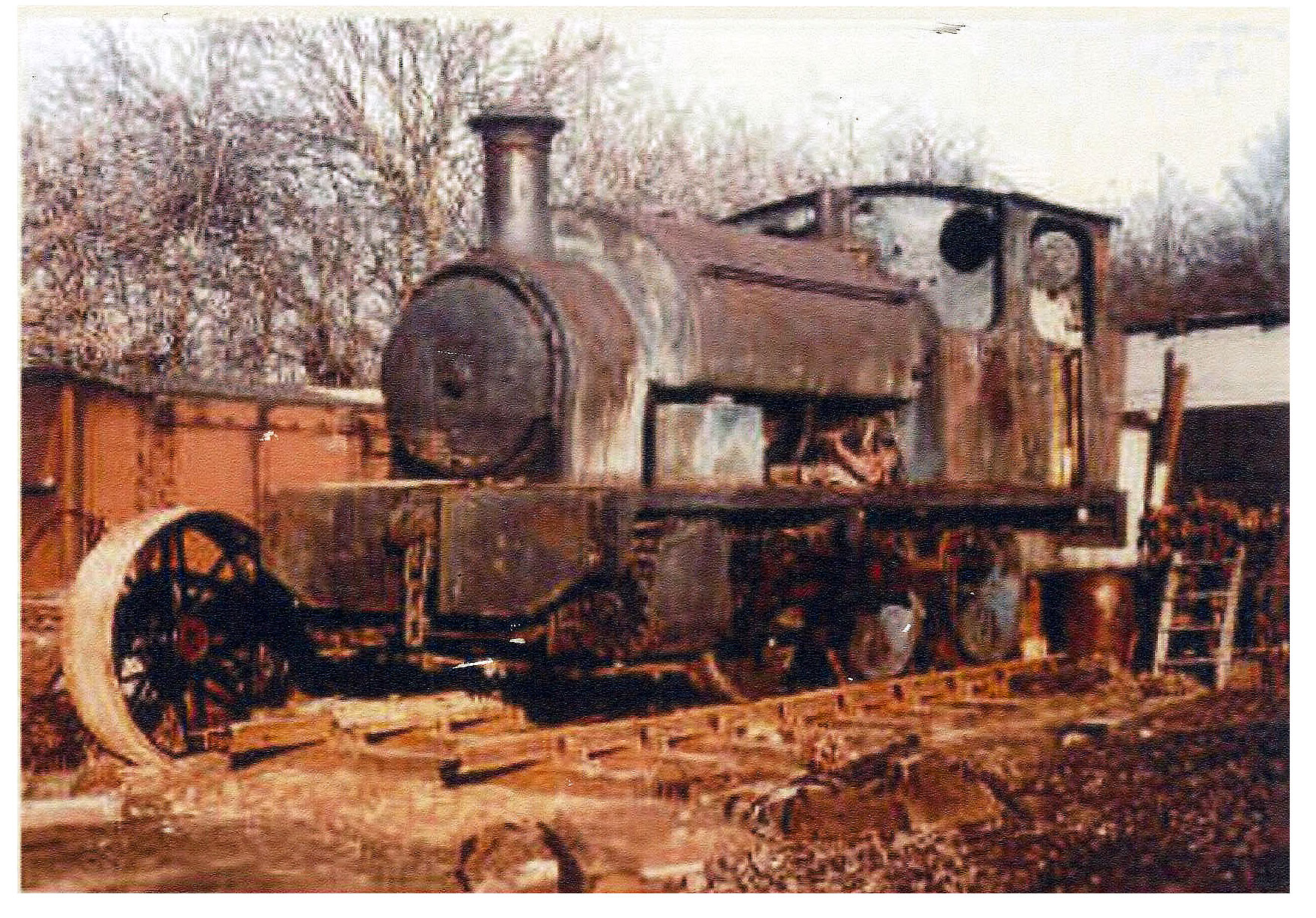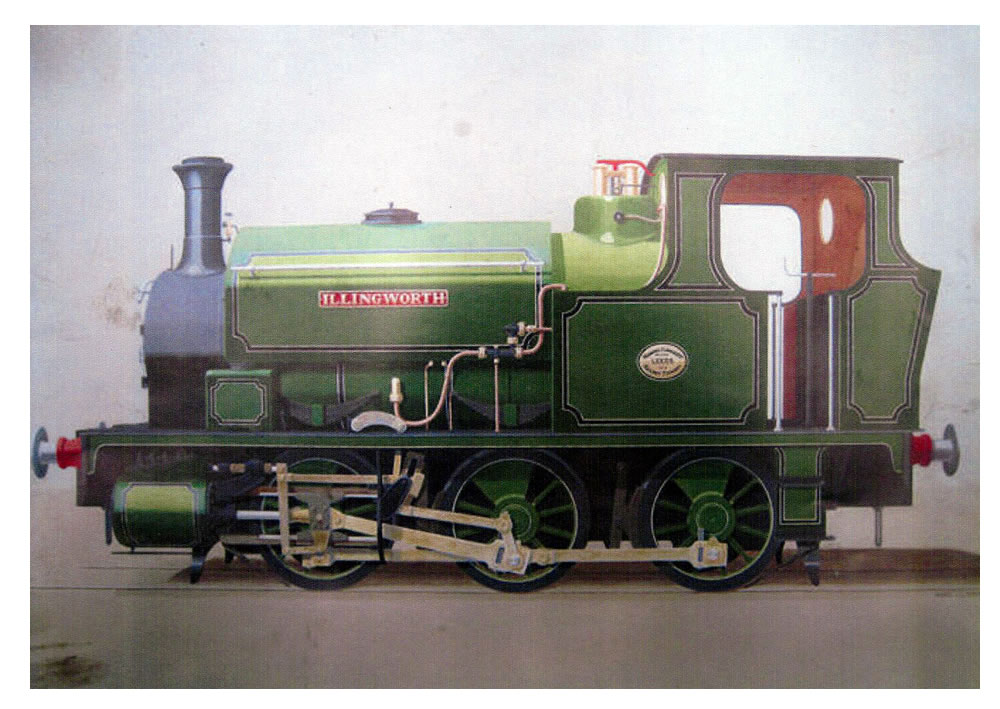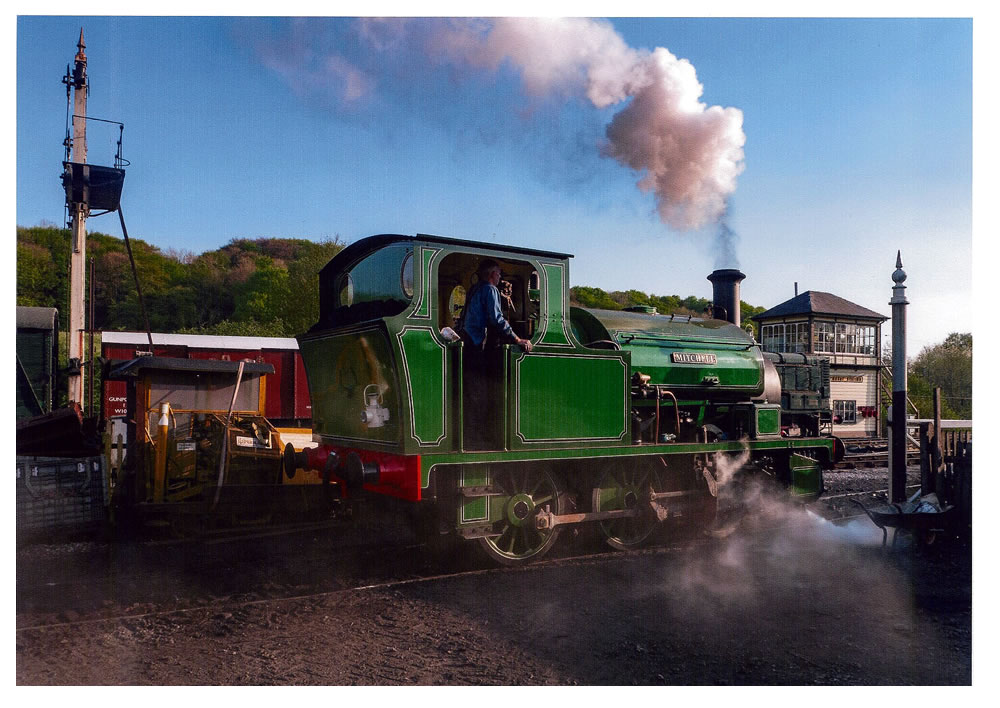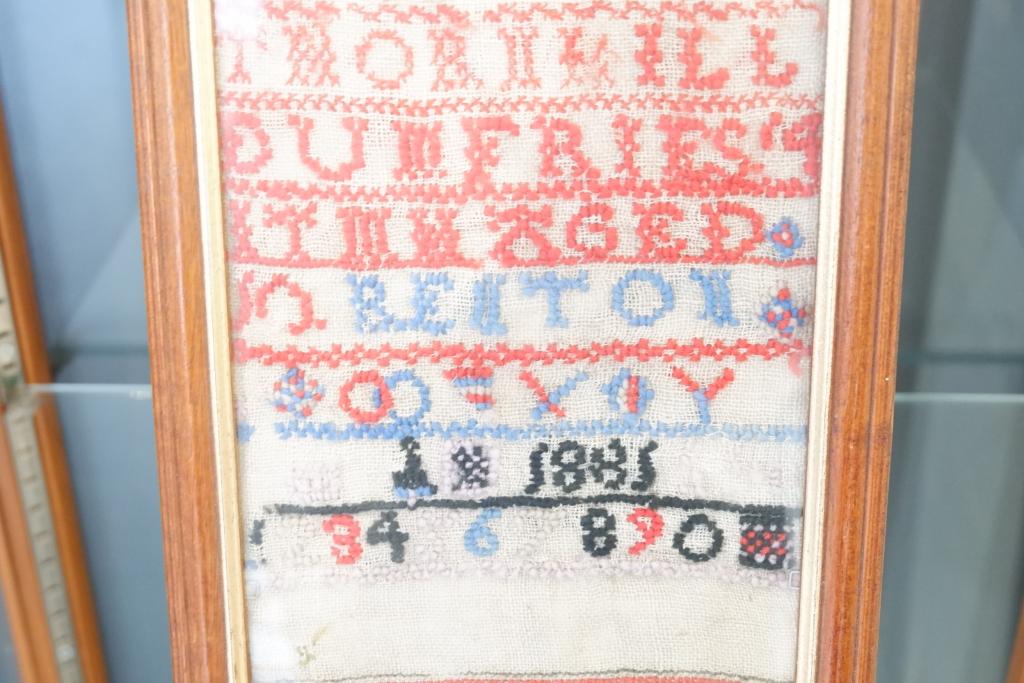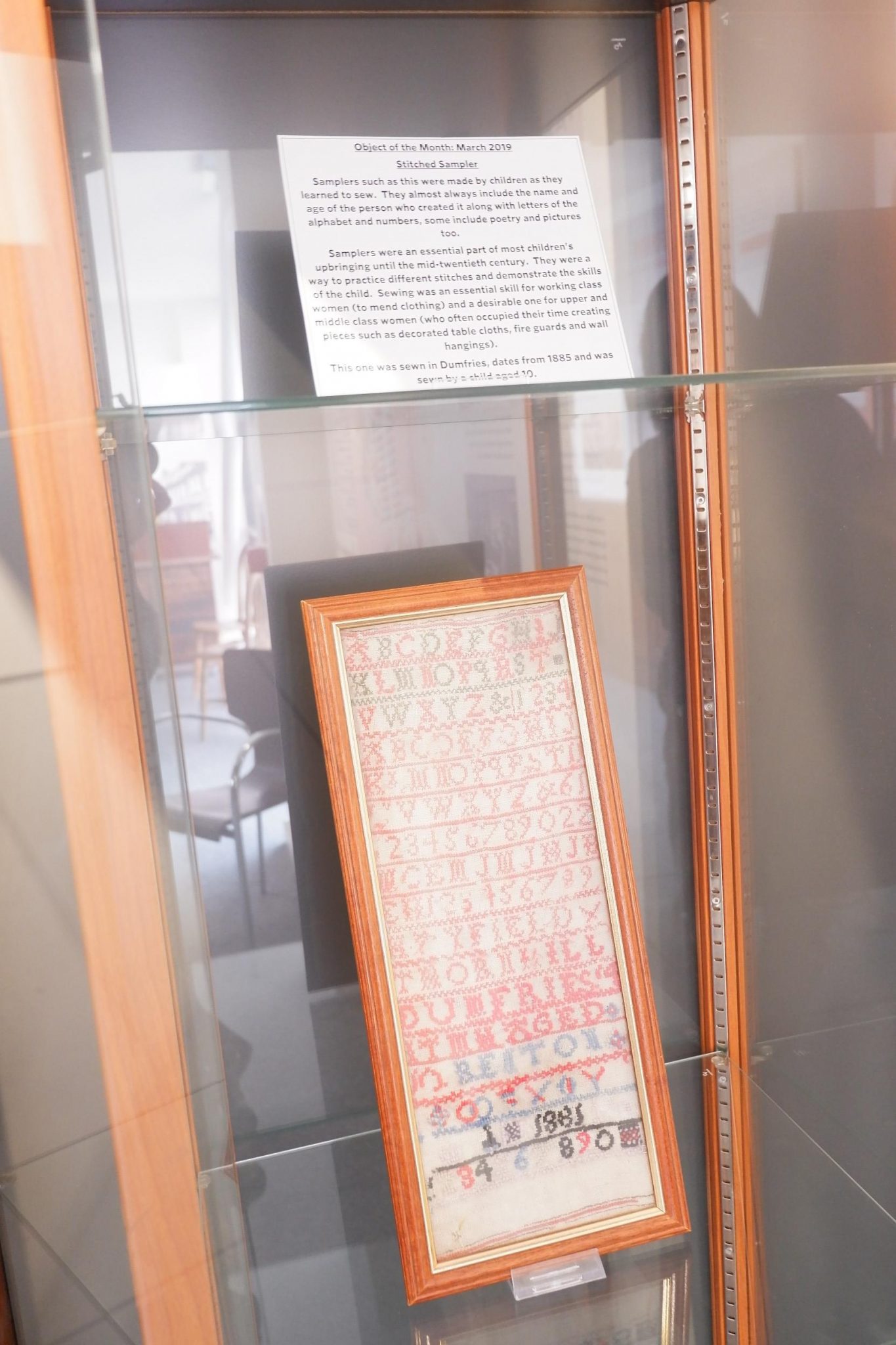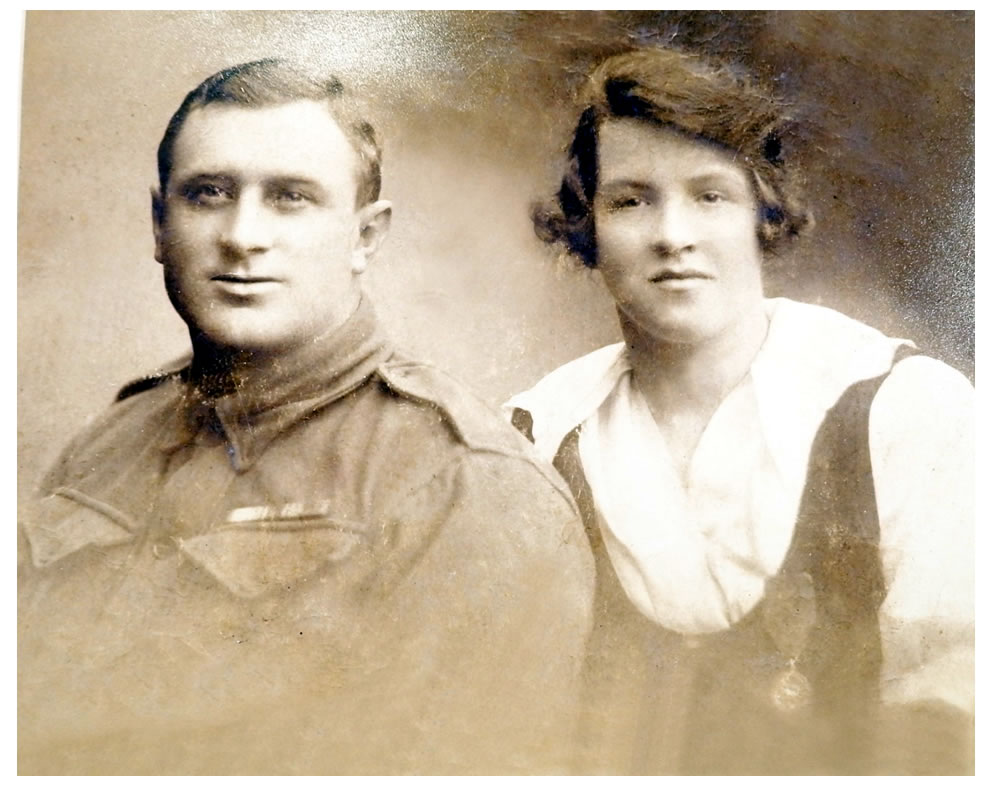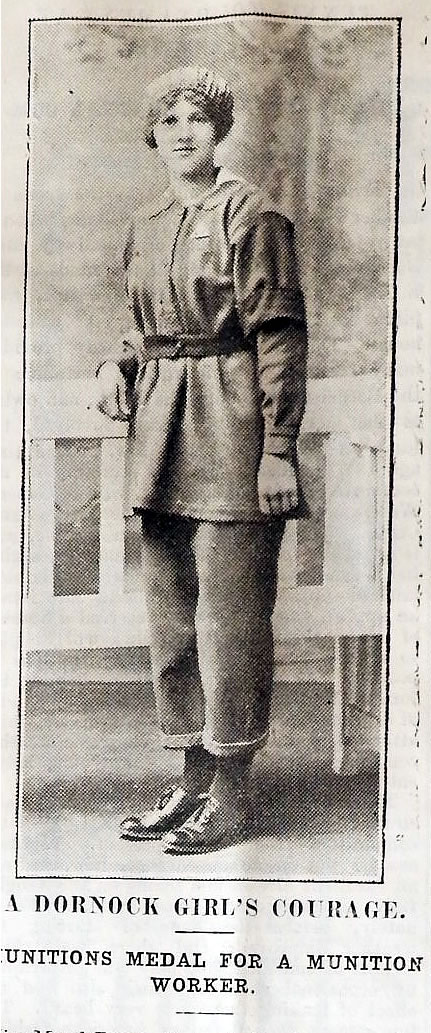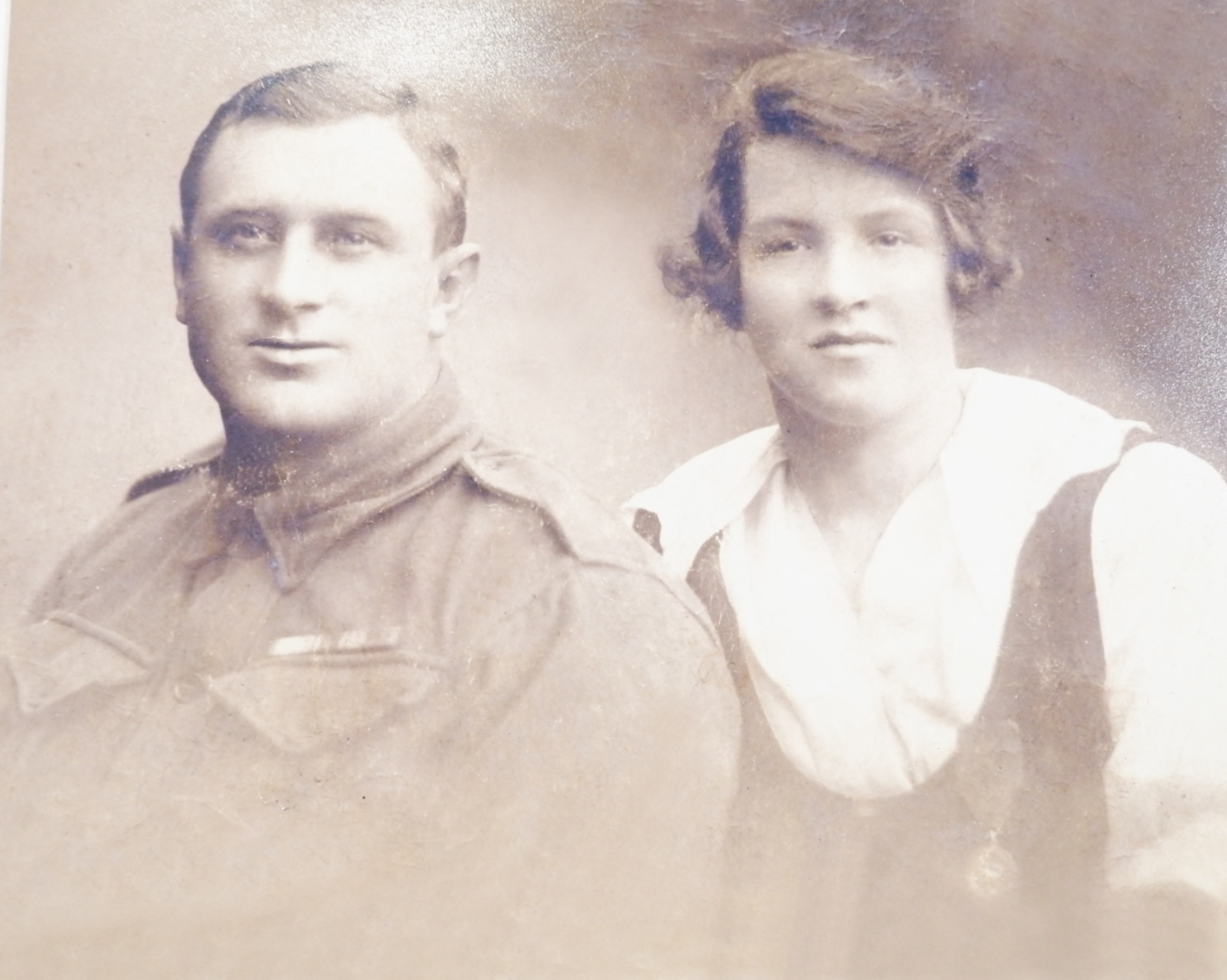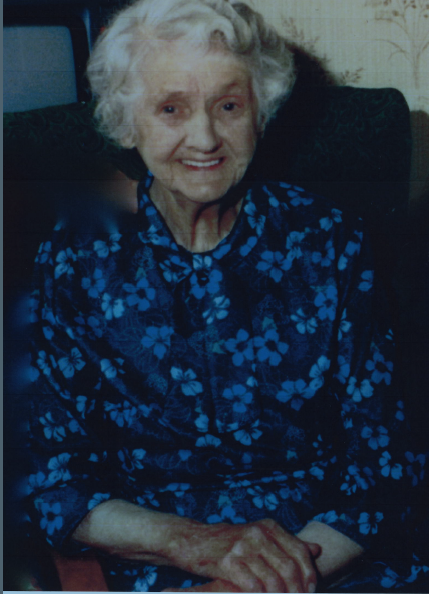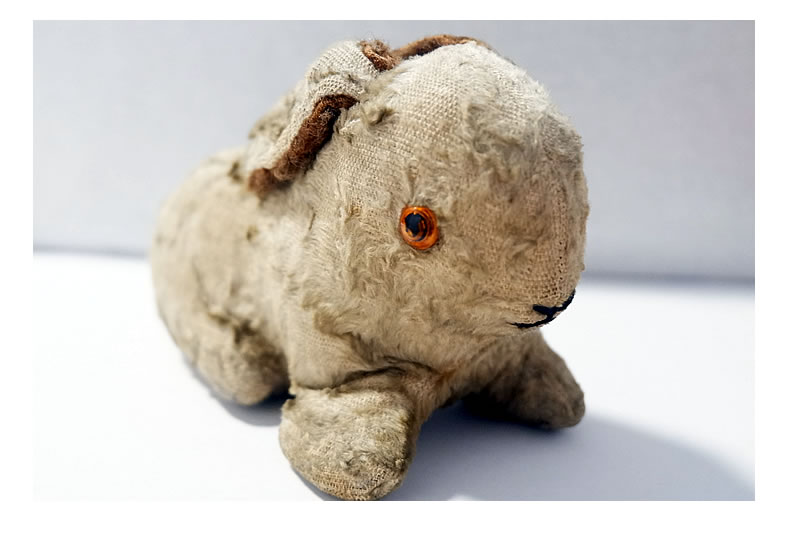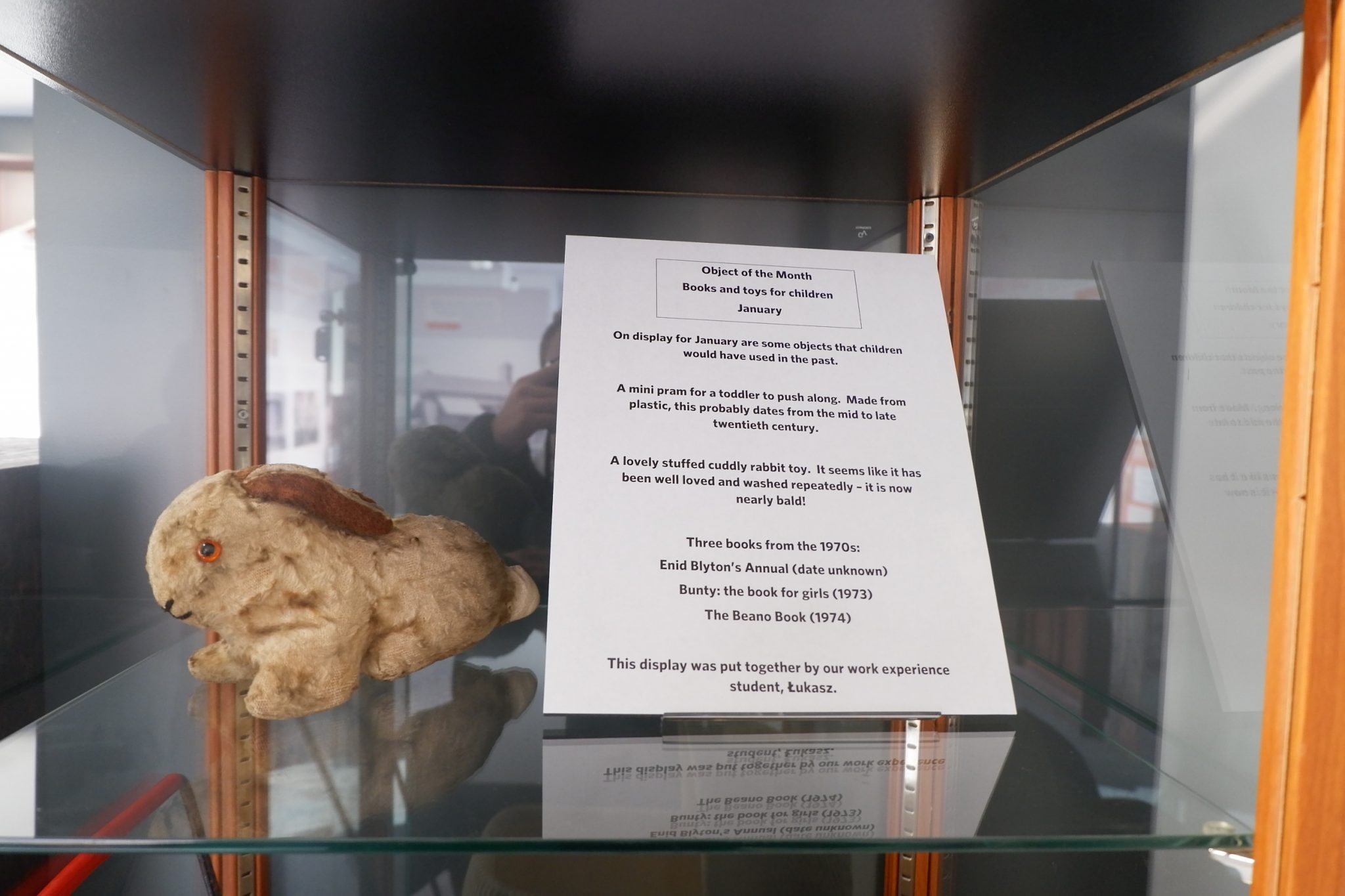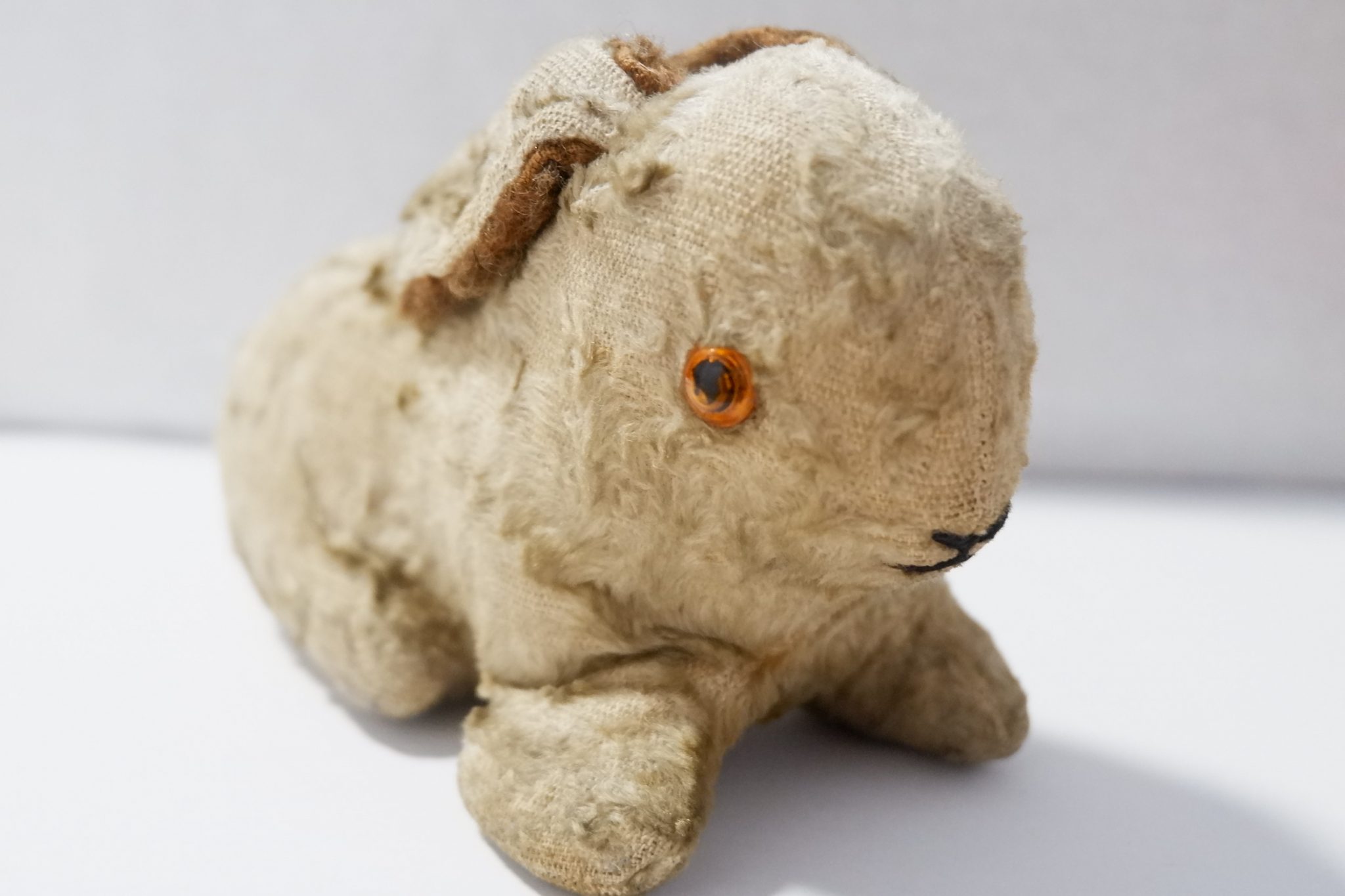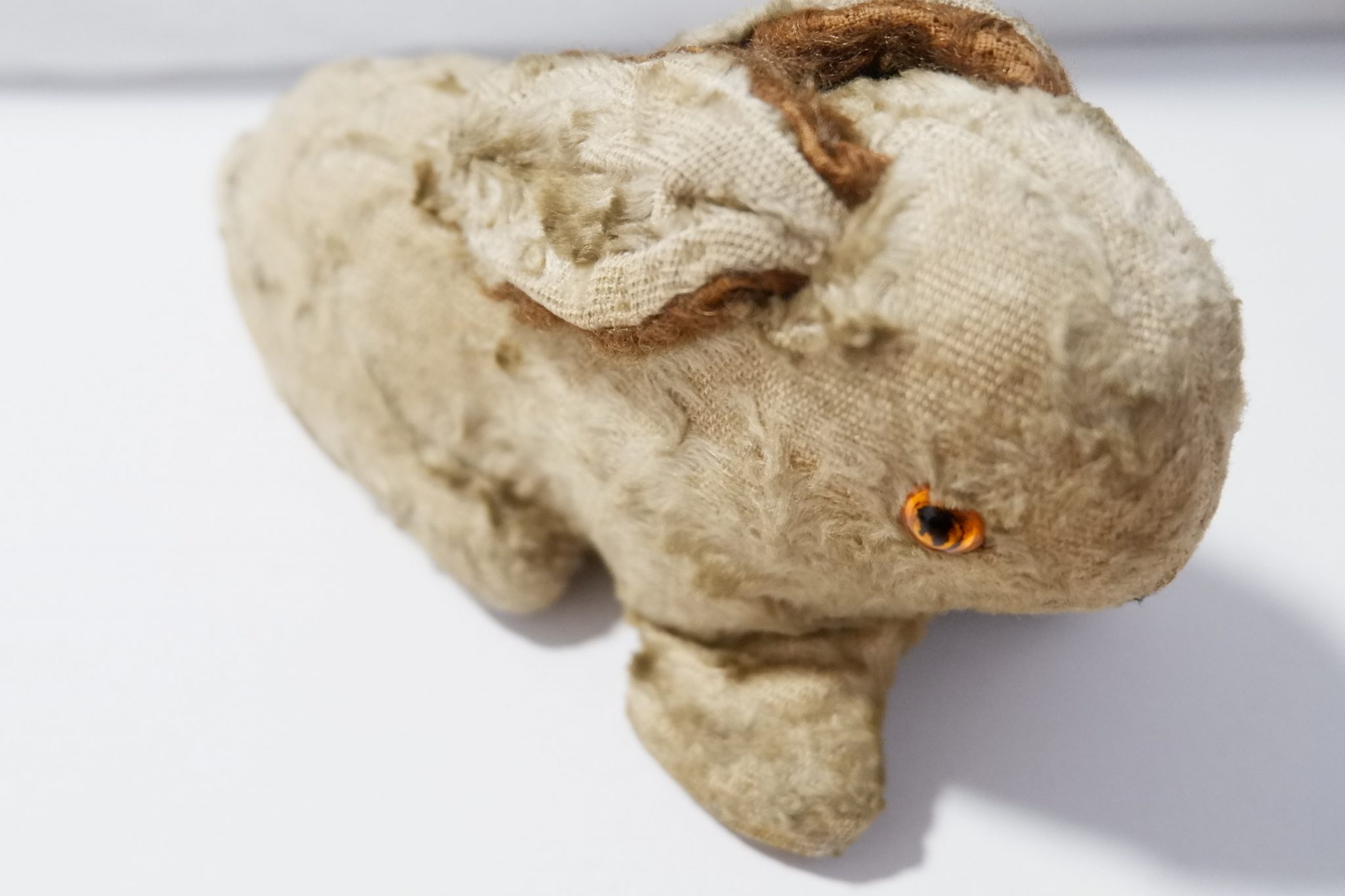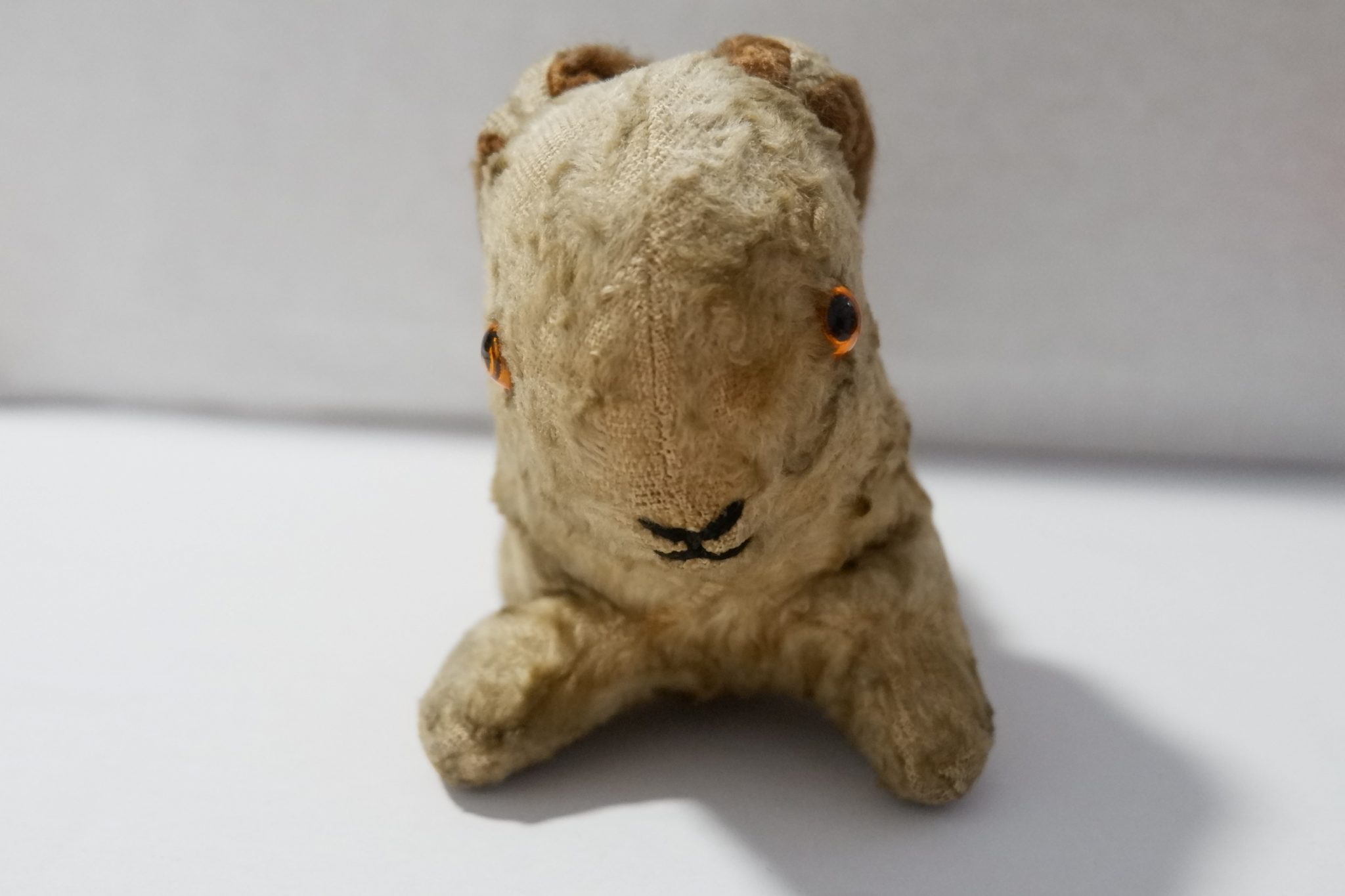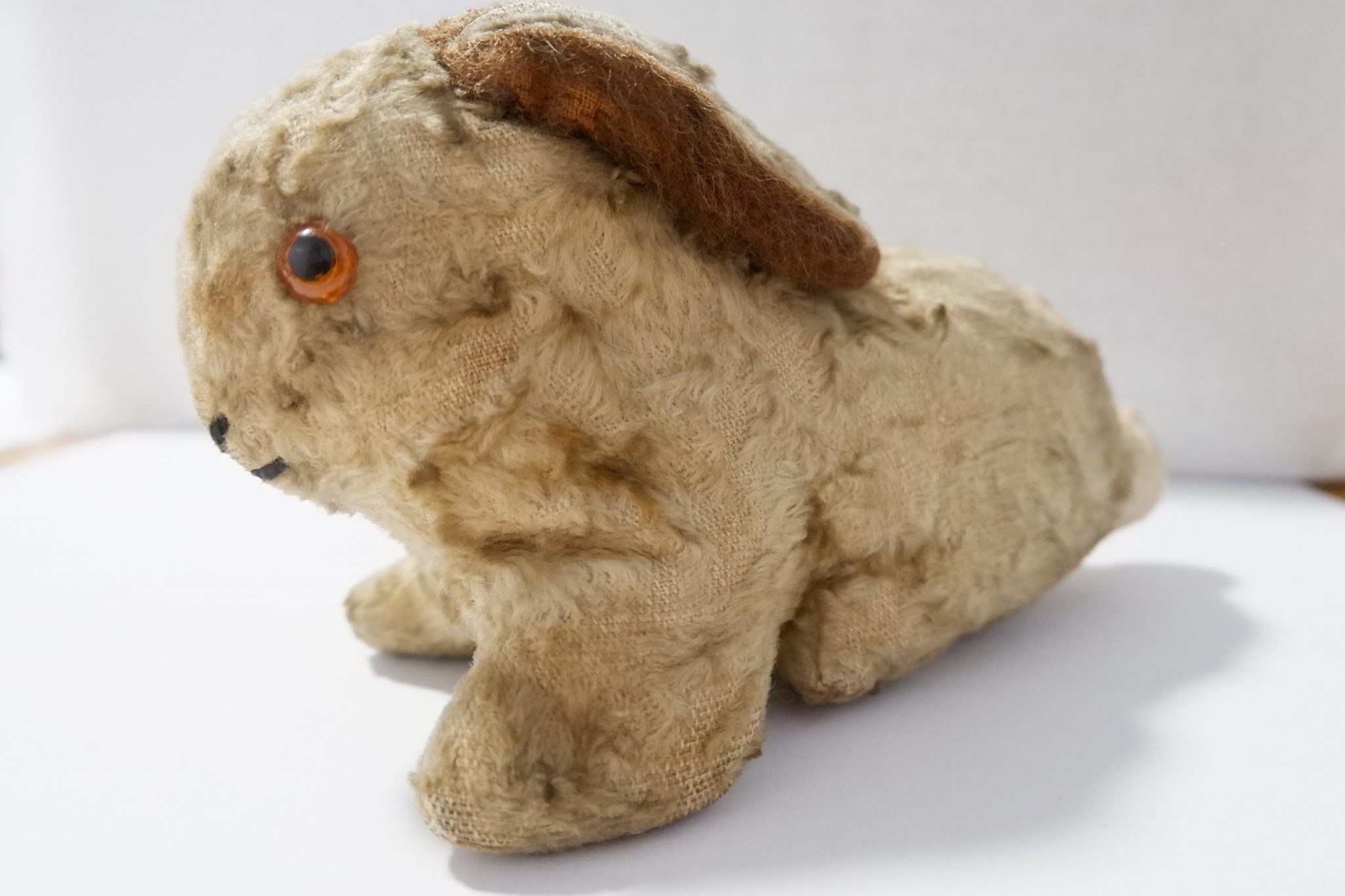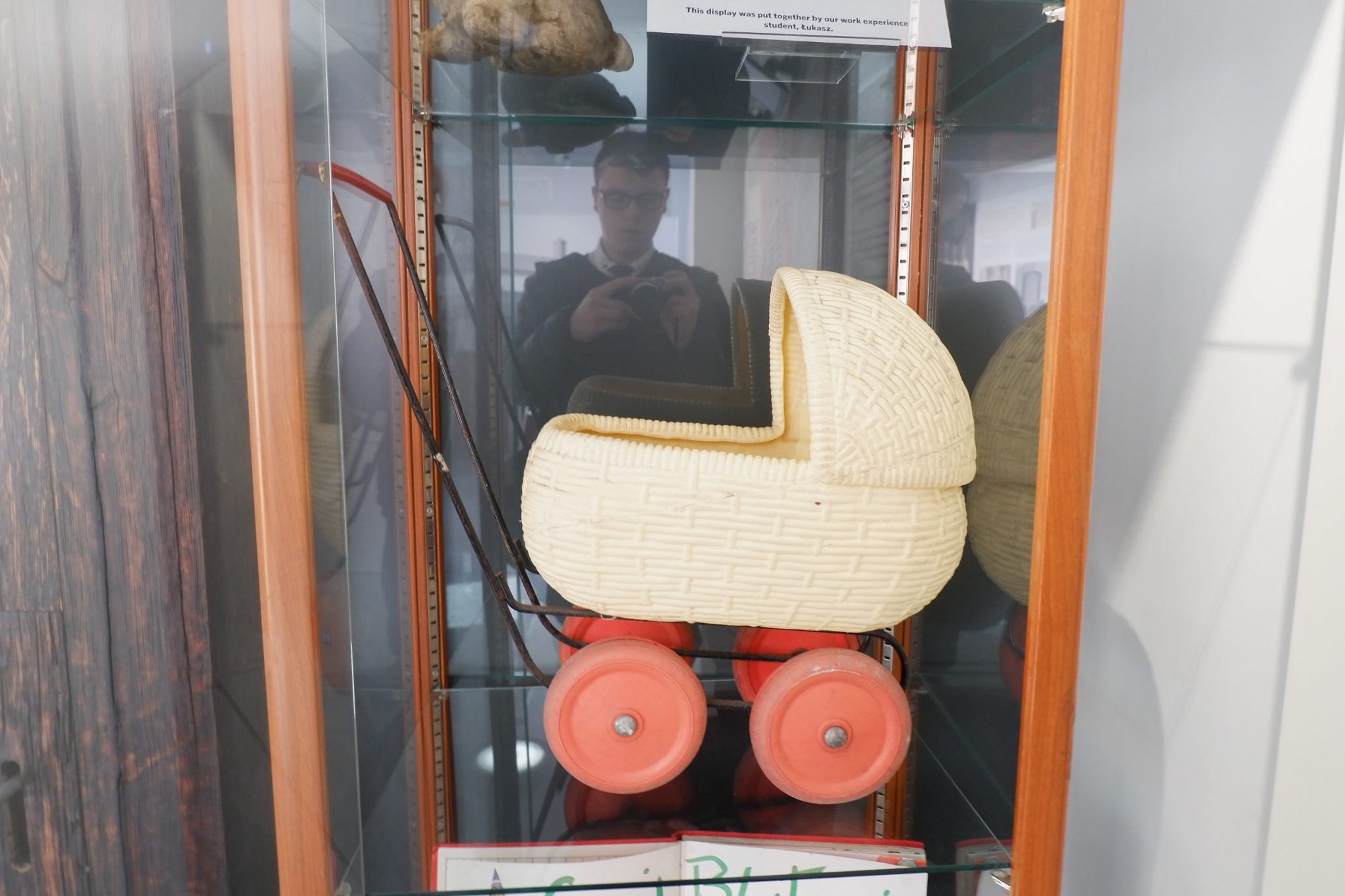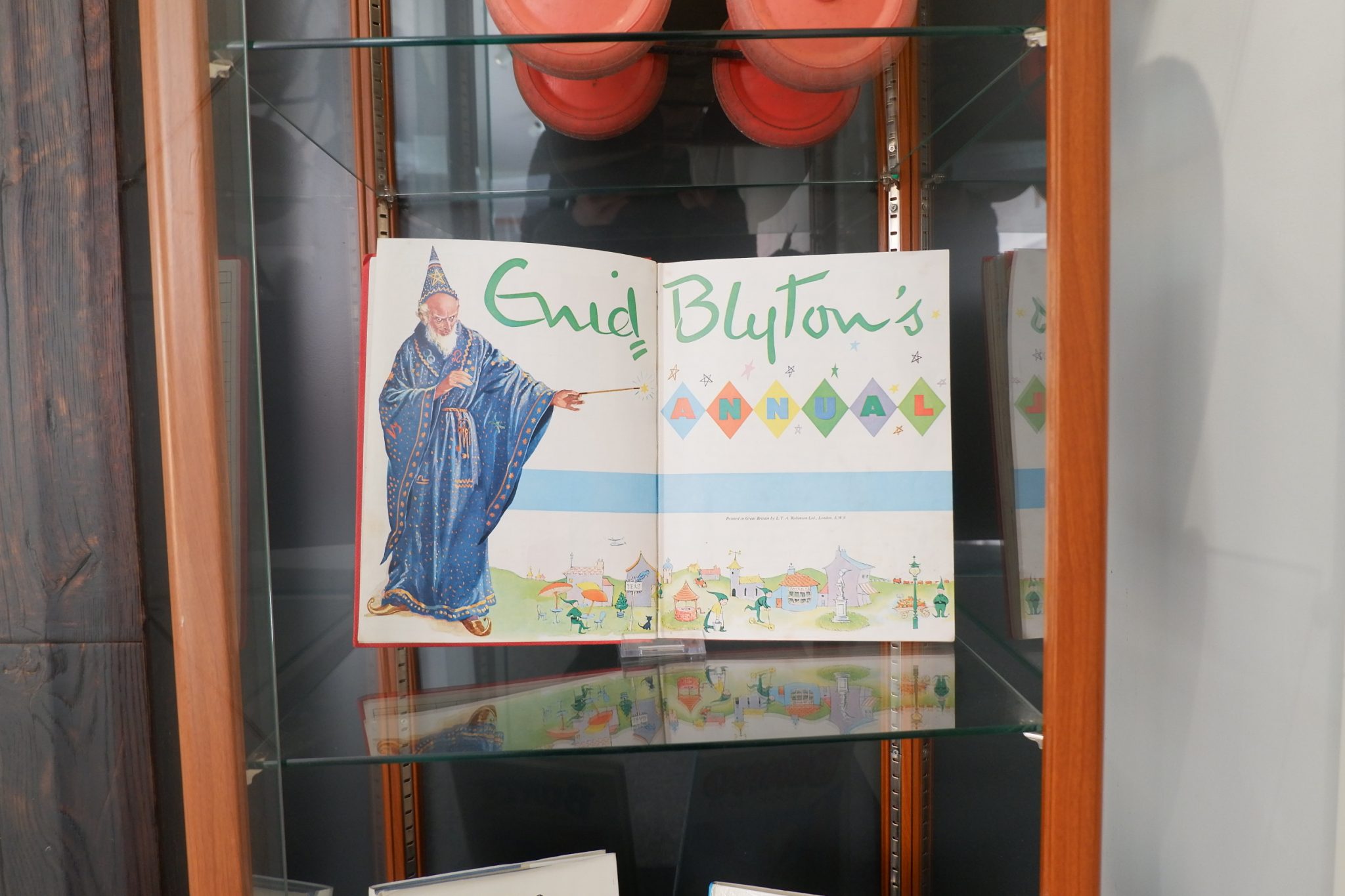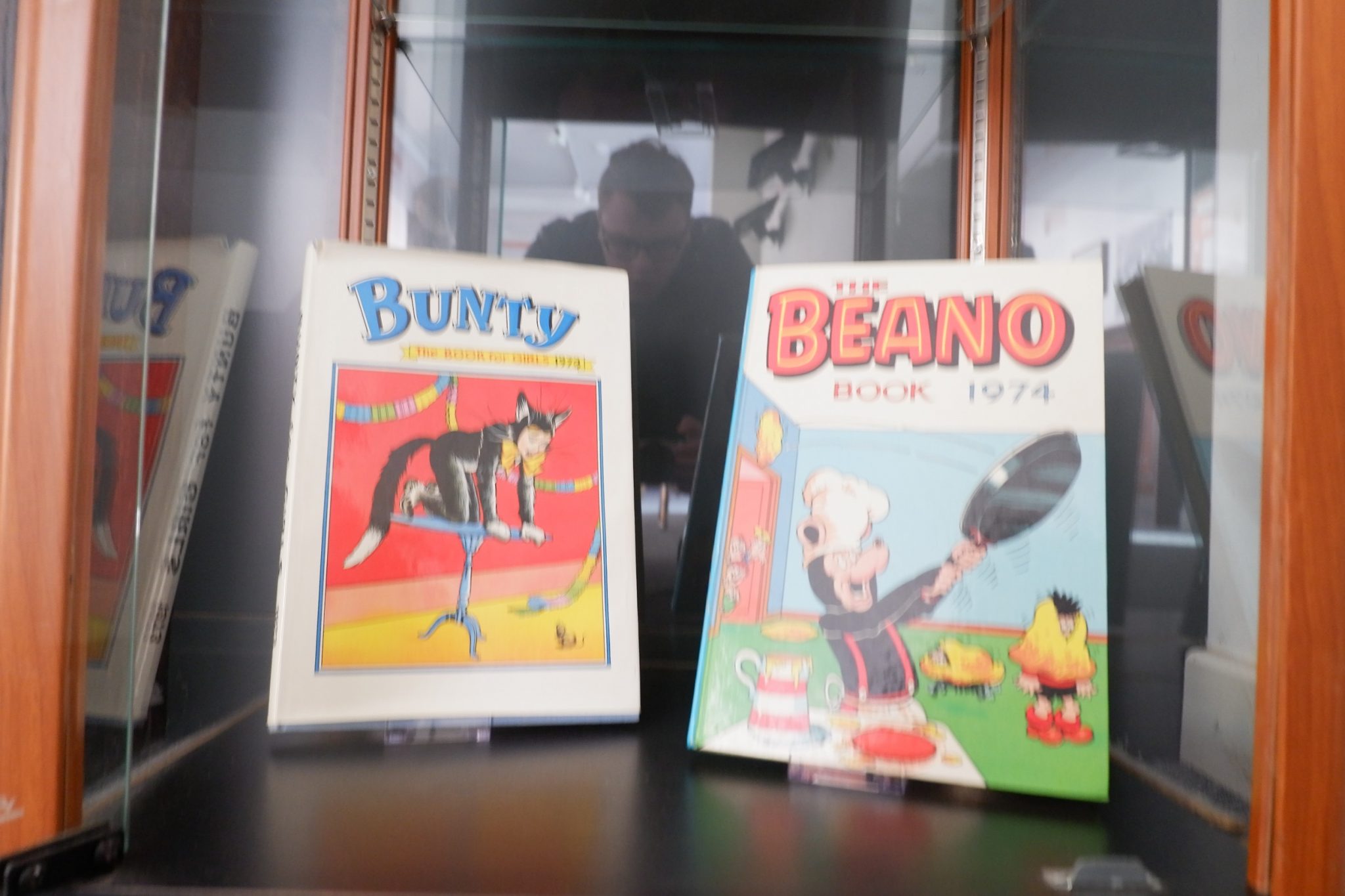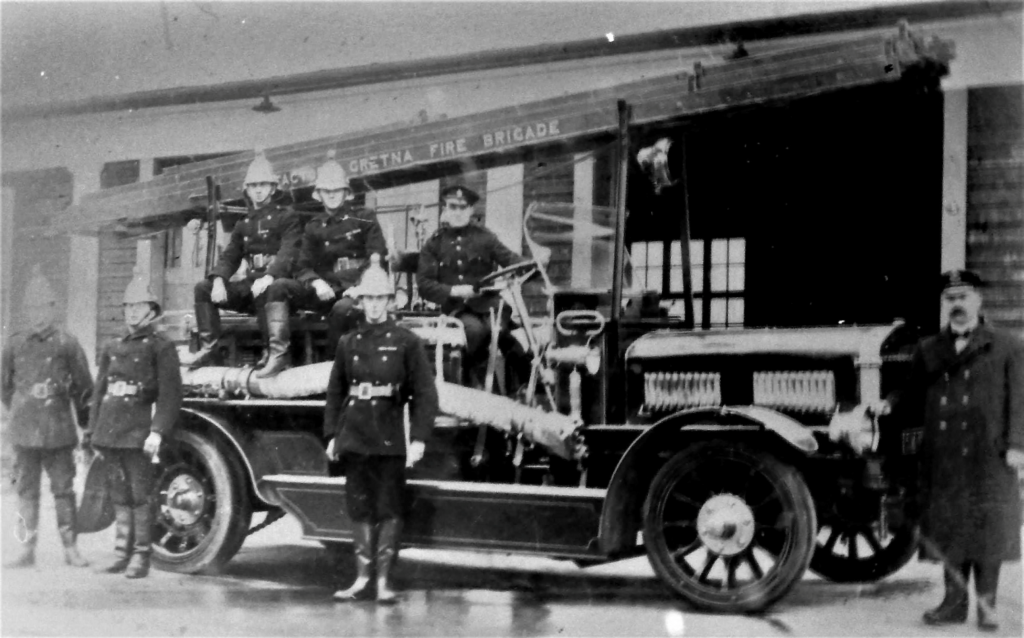
This display and post were created by Morgan, who is doing work experience with us (and possibly an apprenticeship).
This month’s object of the month is a model of a Fire Engine. As a state of the art and potentially explosive factory, many precautions were taken to avert the risk of fire including the provision of fire brigades and fire engines. These photographs show some of the engines and fire stations in World War One.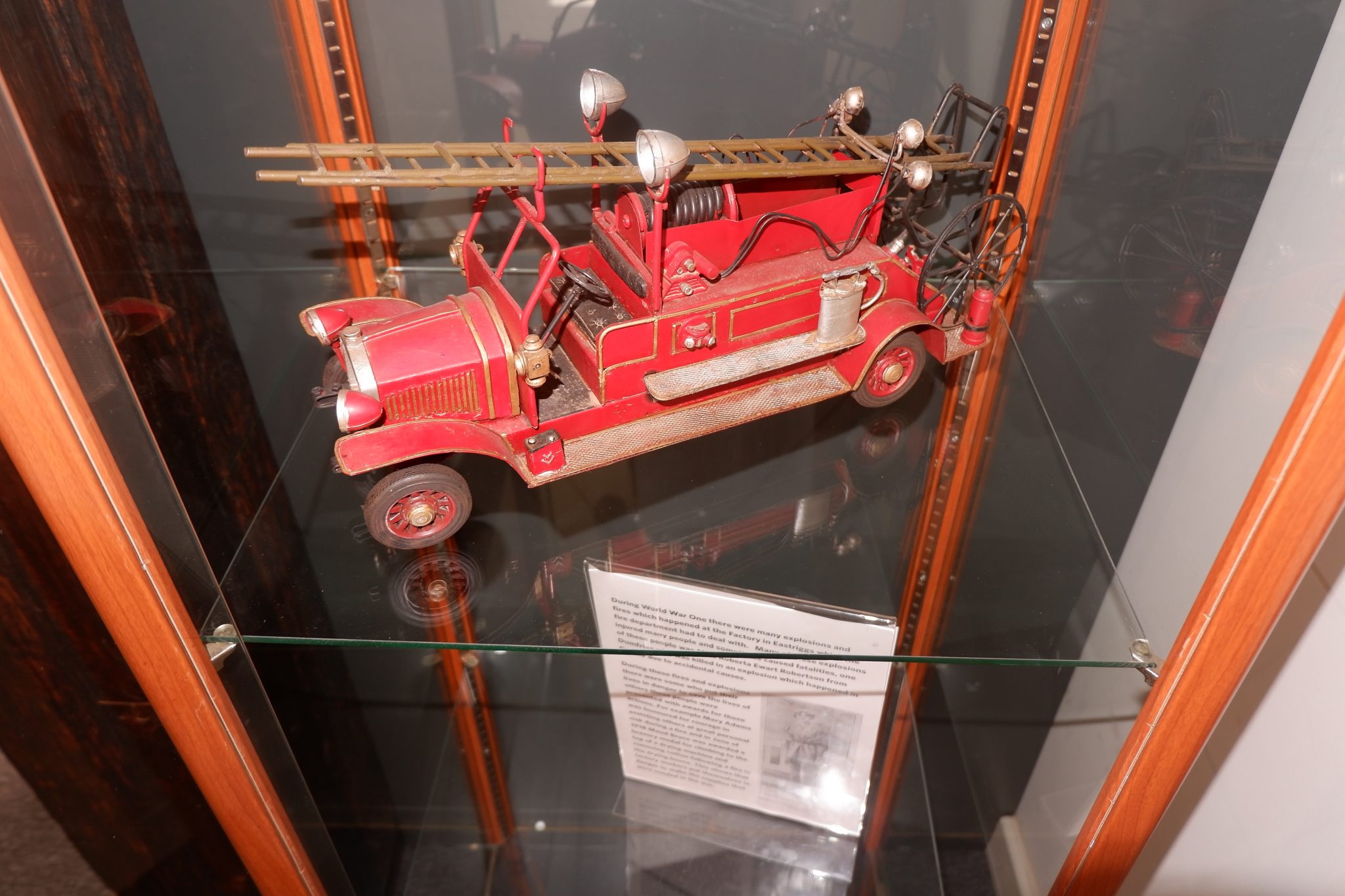
The Eastriggs fire station was located within easy access of the Factory and was surrounded by houses with reinforced concrete walls on the ends that faced towards the Factory site (in case of explosion).
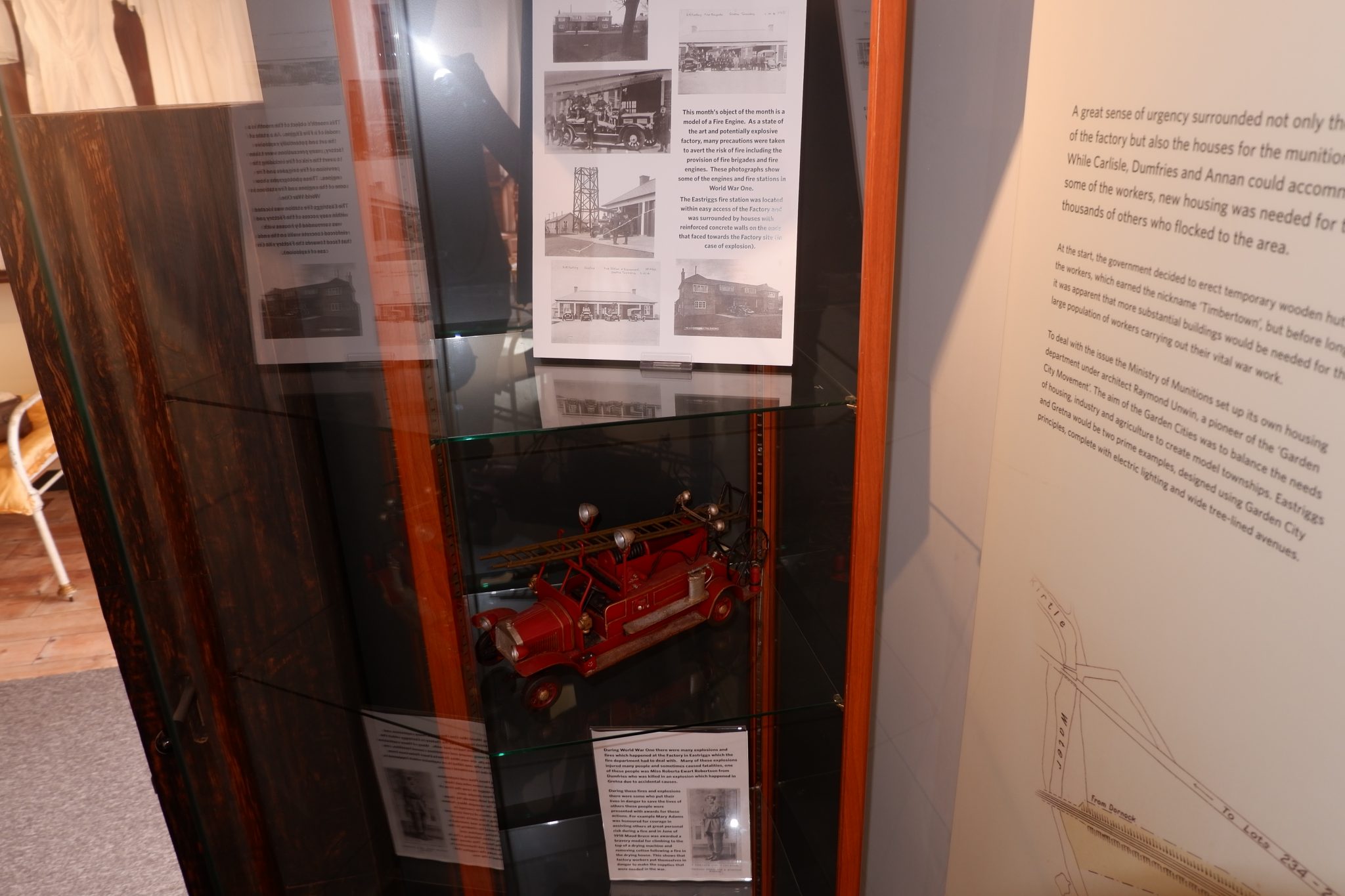
During World War One there were many explosions and fires which happened at the Factory in Eastriggs which the fire department had to deal with. Many of these explosions injured many people and sometimes caused fatalities, one of these people was Miss Roberta Ewart Robertson from Dumfries who was killed in an explosion which happened in Gretna due to accidental causes.
To see Roberta Robertson’s commemoration on a local war memorial click here:
http://warmemscot.s4.bizhat.com/warmemscot-post-81363.html
Photo of Eastriggs fire station during World War One
During these fires and explosions there were some who put their lives in danger to save the lives of others these people were presented with awards for these actions. For example Mary Adams was honoured for courage in assisting others at great personal risk during a fire and in June of 1918 Maud Bruce was awarded a bravery medal for climbing to the top of a drying machine and removing cotton following a fire in the drying house. This shows that factory workers put themselves in danger to make the supplies that were needed in the war.
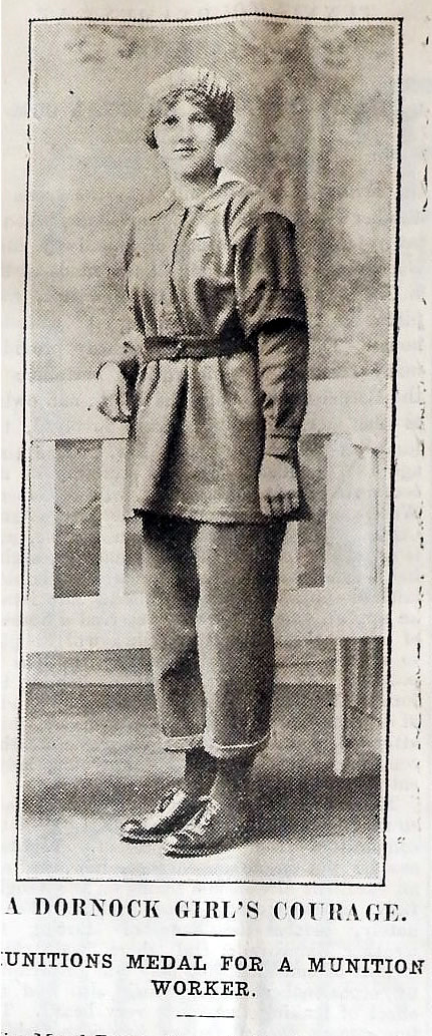
Photo above shows Maud Bruce

